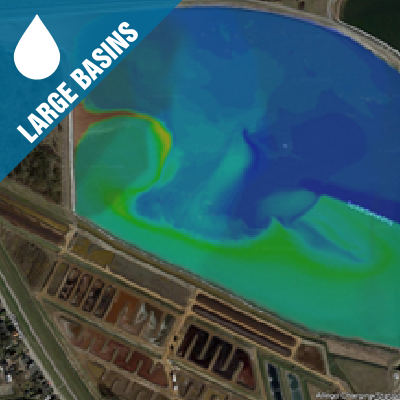Sustainable water treatment thanks to new ozonation technology
PureBlue Water partners with us to build a virtual digital win of their technology that combines ozonation with biological purification.


This project receives financial support from the European Union.
The removal of micropollutants such as pharmaceuticals and pesticides in water is a significant concern for the water industry. Ozonation of secondary effluent for micropollutant removal is becoming more and more popular but presents several challenges. It's a complex and energy-consuming process with a high CO2 emission.
.png)
Better process understanding
PureBlue Water partners with us to find a more sustainable solution to overcome these challenges. The 'HydrOzone' technology combines ozonation technology with biological purification. Via the CFD modelling, coupled with our in-house AMOZONE model, we're building a 'digital twin' of the technology to predict parameters that you cannot measure in reality. We're also running different 'what-if' scenarios to predict ozone transfer efficiency, micropollutant removal, bromate formation, etc.
Previous


Next
Reducing energy consumption and CO2
This project focuses on investigating and optimising different ozone injection systems achieving a high and sustainable micropollutants removal without by-products (e.g. bromate),minimising the energy consumption and CO2 footprint.
The CFD models provide insights into the system's mixing, velocity, and ozone transfer efficiency. In combination with the AMOZONE model, we're simulating the ozone kinetics reactions and predicting the removal of micropollutants along with the formation of bromate. This gives a 3D view of the variables and quantifies them.
Wastewater treatment done differently
Kevin van de Merlen, PureBlue Water: "In this project, we're developing a sustainable water treatment technology to purify water at wastewater treatment plants. It combines a new type of ozone reactor with biological purification. By applying the ozone more efficiently and coupling it with the biological process, we can significantly reduce the energy consumption and CO2 emission."
This new technology allows wastewater treatment plants to emit 3 to 7 times less CO2 than current ozonation techniques with a sand filter (based on the CO2 emission level for a wastewater treatment plant of 100,000 inhabitants).
Contact us
Suggested Projects


Subscribe to our newsletter








